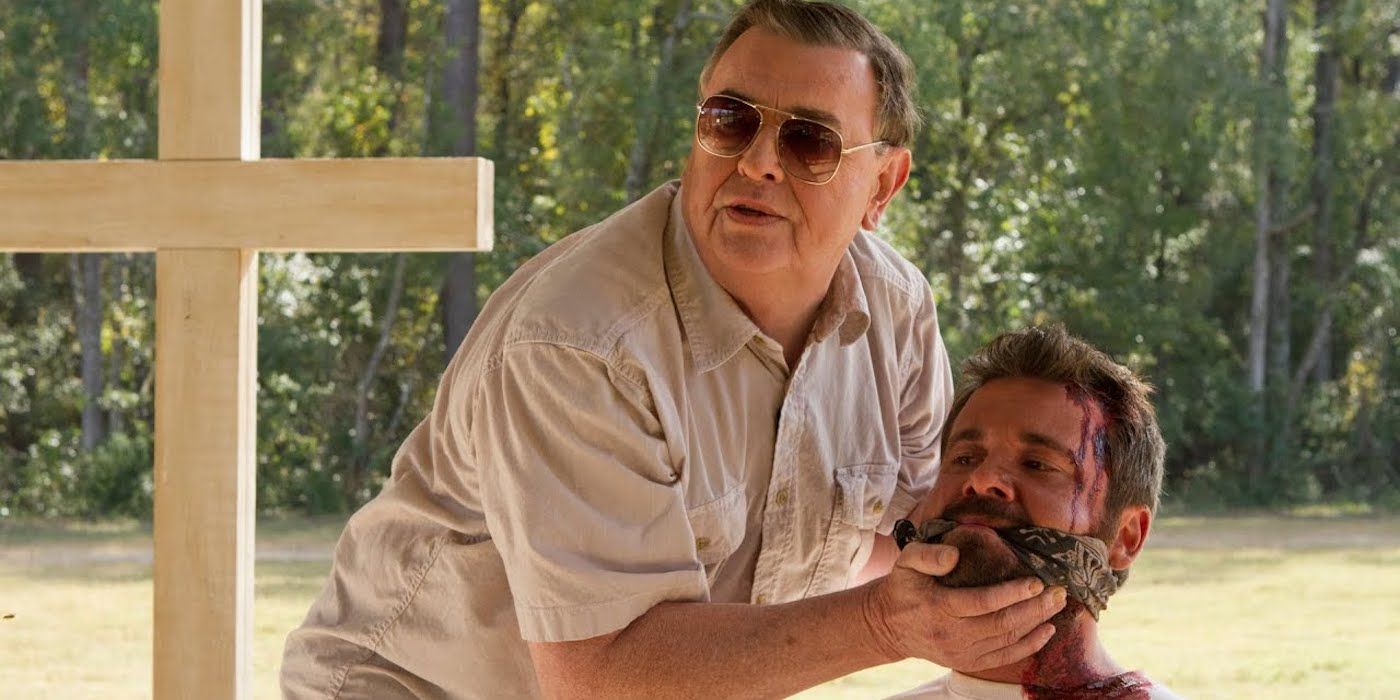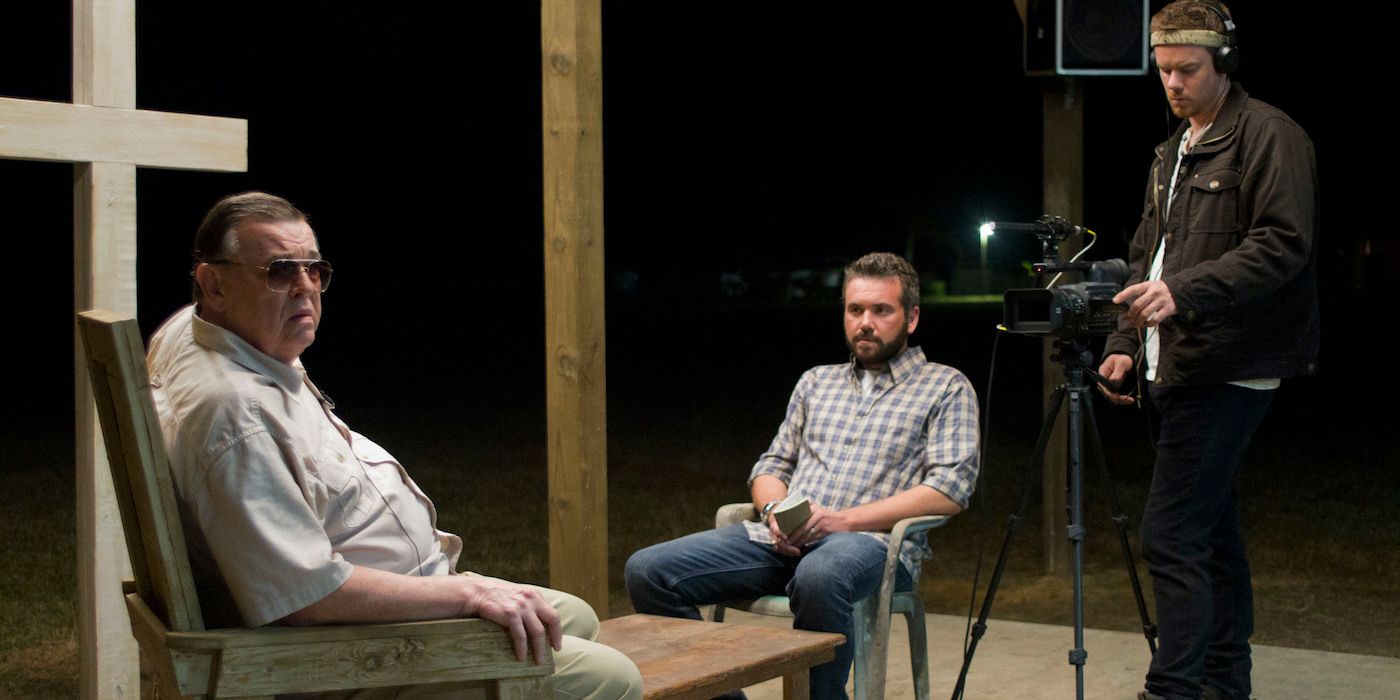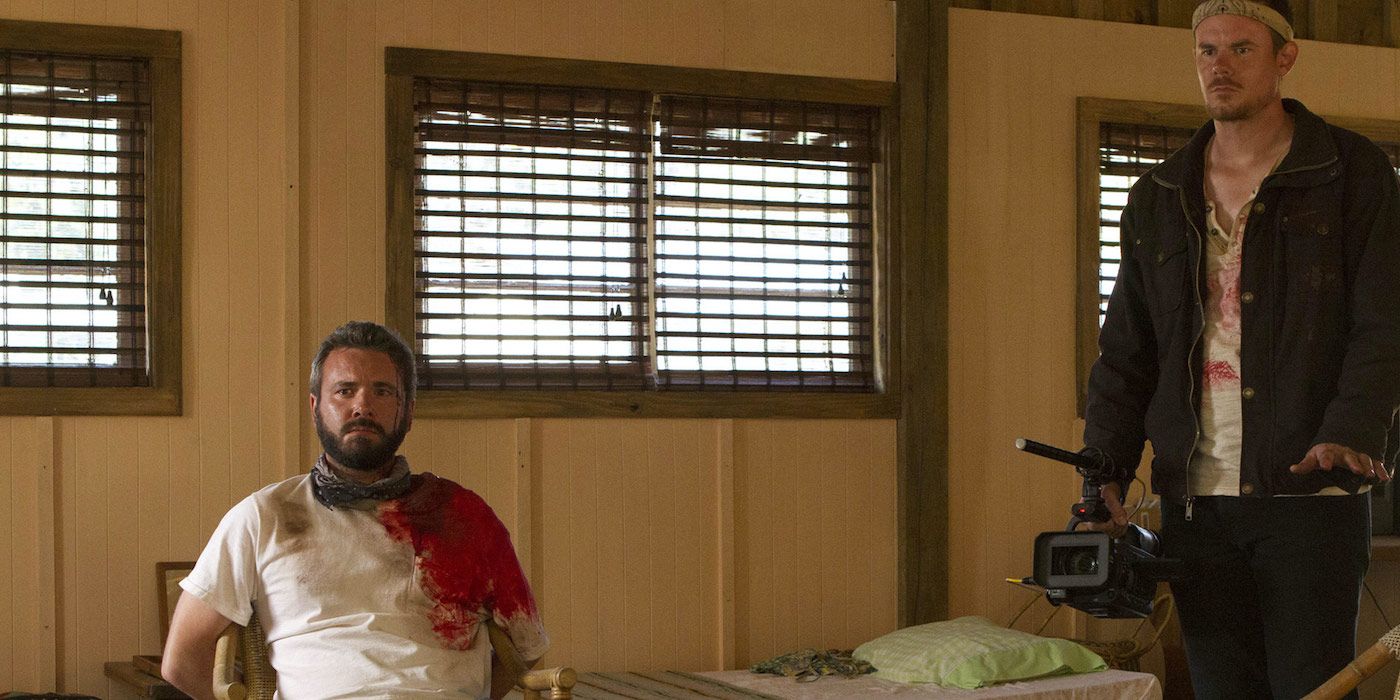Upon making one of the most terrifying segments in the V/H/S franchise, “Second Honeymoon,” Ti West had already proven himself gifted in directing found footage. His segment was relentlessly eerie in its calculated restraint and helped further emphasize how the act of simply sleeping can be so damn terrifying. Here’s looking at you, Paranormal Activity. West, however, solidified his talent in found footage a year later with The Sacrament. Found footage usually relies heavily on the extremely controlled perspective given to audiences through either one hand-held camera, a number of strategically placed static cameras, or a combination of the two. Unlike more traditionally shot horror films, the audience is positioned completely at the mercy of whatever the characters are able to capture in their (often last) moments of utter terror. For these reasons, the sub-genre is ripe for depicting supernatural scares but is often underutilized when it comes to emphasizing how the actions of other people can be just as horrific as even the strongest demonic entity.
Throughout his two forays into the horror sub-genre, West ingeniously uses the conventions of found footage to depict horrific situations without giving into the audience’s usual expectations of encountering back-to-back jump scares or ghosts. His style, when approaching found footage, is a bit slower and allows ample time for the action on screen to unravel at its own pace. West is just as concerned with presenting fully fleshed-out character interactions as he is with wrapping his viewers in a thick layer of dread and, for him, the two often go hand in hand. As a pretty overt homage to the Jonestown Massacre, The Sacrament uses an “immersion” style found footage approach to documentary filmmaking as a way of breaking the genre’s limitations. By framing the found footage as an already completed documentary with editing, a soundtrack, and intertitle cards. West is able to present a polished final product while still benefiting from the type of chaotic atmosphere that thrives with the use of found footage techniques.
The Thin Line Between Fiction and Reality
The film opens with VICE correspondent Jake (Joe Swanberg) interviewing a New York-based photographer, Patrick (Kentucker Audley), about his sister, Caroline (Amy Seimetz). It is revealed that, after suffering from drug addiction, Caroline left the city to join a sober-living community in Mississippi which eventually led her to move out of the country with the rest of the community to establish their own commune called Eden’s Parish. From the beginning, Caroline’s situation is shrouded in mystery and serves as the clear jumping-off point for the rest of the film. Jake manages to convince Patrick to let VICE document the trip and employs Sam (AJ Bowen), another VICE correspondent, to accompany them. The three venture off to an undisclosed location after Patrick receives a cryptic letter from his sister with little information apart from a phone number attached to the end.
It is a complete wonder that West was able to get VICE Media on board with using its branding in the film. Not only does the use of VICE serve as a great framework for actually presenting The Sacrament as a documentary, but using such a recognizable media company helps to legitimize it. VICE is already incredibly well-known for its cutting-edge (and sometimes controversial) approach to news reporting from documenting teenage exorcisms to one town’s annual dog-eating festival. One intertitle card at the beginning of the film states: “Available in over 34 countries, the company is known for covering provocative & controversial stories usually overlooked by the mainstream media. This new-age type of journalism has produced some of today’s most compelling & original content, in a style often referred to as ‘Immersionism.’” Along the lines of other famous found footage films like Cannibal Holocaust and The Blair Witch Project, this sort of meta-approach to constructing The Sacrament frames the horror of the film as teetering the line between fictionalized found footage and snuff. However, what differentiates West’s film from the rest in terms of its meta-framing is the very recognizable brand behind it. In many ways, this film feels a lot like existing VICE documentaries and really confronts audiences with how uncomfortably close found footage can get to real life.
The immersionism aspect of documentary filmmaking The Sacrament harks upon is what really allows West’s vision to shine. The film manages to feel artful and stylized while still retaining the voyeuristic gaze of the genre. While disturbing, the film can also come off as strangely hypnotic at times because it is painfully aware of how much the camera can impact the audience’s mood. In many ways, the camera is just as much a prop in the film as it is a tool. This is, in large part, due to the inclusion of B-roll and atmospheric music to help emphasize the action on screen. There are a few instances within the film where the camera is allowed to slowly linger on the havoc taking place on-screen which is atypical of the usual erratic nature of found footage. By juxtaposing shaky camera footage with steady panning shots, the audience is constantly disoriented and forced to reorient themselves. Since our three main characters are all established to have familiarity with aesthetics and filmmaking, the number of framing shots present within the film doesn’t feel too far-fetched and adds to the audience’s awareness that this is supposed to be an edited documentary rather than an untouched roll of film. Even more so, the B-roll shots lingering upon the carnage at the end of the film and constant signifiers of post editing take on much more sinister roles upon further inspection. It becomes evident that the existence of the documentary hints at the prioritization of capturing material for their art throughout their interactions with the dying victims they make sure to capture on film.
Human Monsters
Despite The Sacrament’s relentless depiction of on-screen violence in its third act, it refuses to rely solely on disturbing visuals to drive the horror home. In fact, the film is extremely dialogue-heavy and a large part of its sense of dread is derived from the various interactions between the characters. The film manages to already be scary even before the aspects of it that are most typically attributed to horror unfold on screen. One of the true highlights of the film is Gene Jones’ absolutely enigmatic portrayal as the commune's leader, Father. His presence haunts the camp as various interviews featuring his devotees show them expressing their utter devotion to him with hearts in their eyes.
Father is purposefully only mentioned by name until his grand reveal halfway through the movie. A tension-filled ten-minute-long interview between him and Jake helps to bridge the two halves of the film. As the two are speaking, the camera pans over their audience as they hang onto each word and cheer on Father regardless of what he says. What makes West's approach to the characters effective is the way in which he allows these dynamics to slowly unfold. The filmmakers are never told how to feel about Father but are presented with a mosaic of perceptions that build him up as the figure that stands before them. Up until a certain point, they even seem dangerously close to wholeheartedly buying what he's selling.
West's multifaceted approach to the conventions of found footage and ethics of documentary filmmaking undoubtedly offers a fresh and innovative perspective on this much trod upon sub-genre of horror. As West (and other upcoming horror directors) continue to try their hand at reimagining the capabilities of traditional horror framing, it's exciting to think about what the next few decades of the genre have in store. West's eye for thinking outside the box when directing found footage definitely shows off his knack for hacking its conventions to his benefit and indicates the potential of any future found footage works from him as his style continues to progress upon the respective releases of the ultra-retro stylized X and Pearl.



